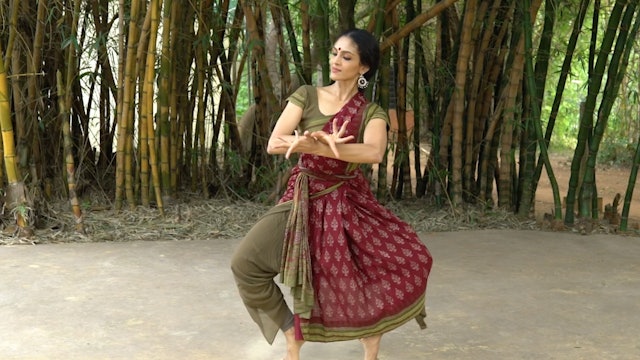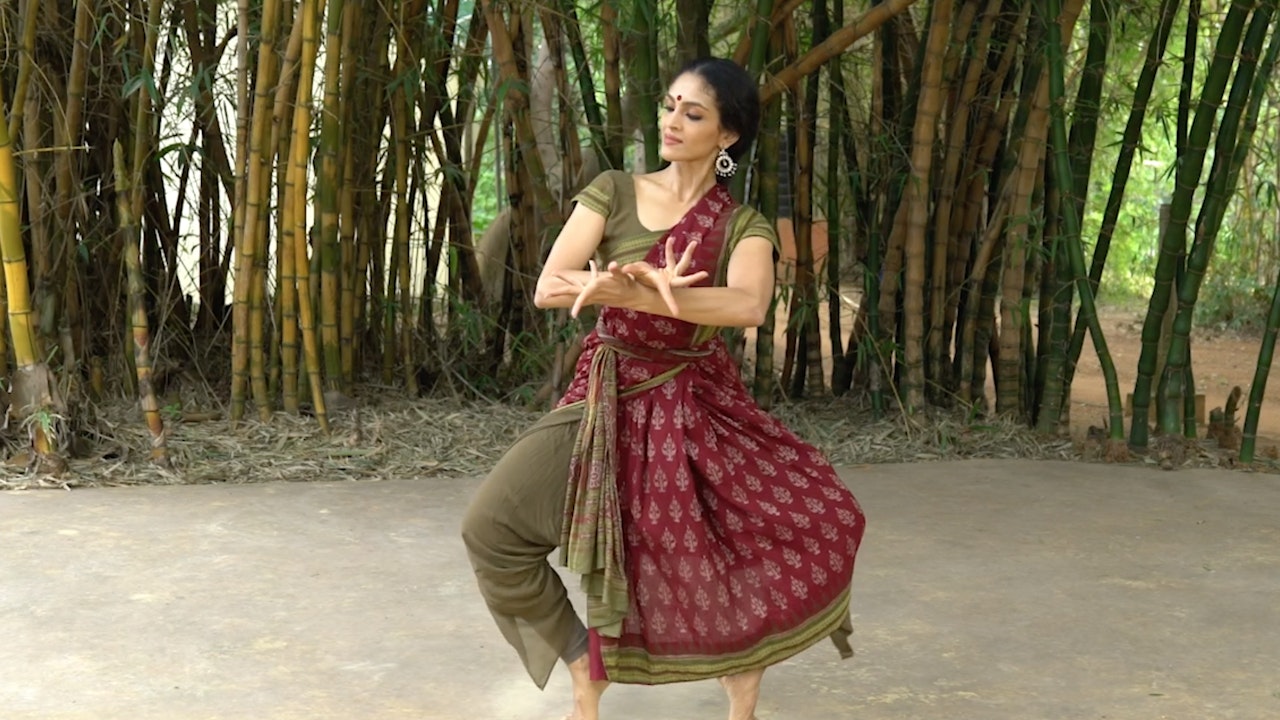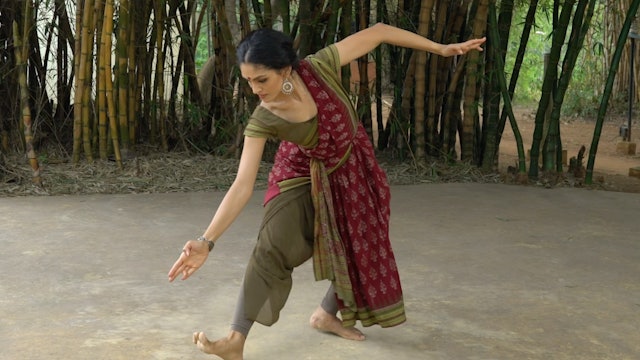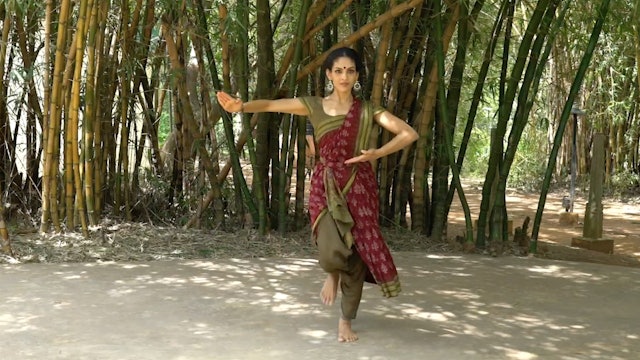Adavus: Practice videos
2 Seasons
We recommend that the student watches the instructions for the Aduvus, before commencing the practice of each Adavu set for at least a period of 5 to 6 months.
Please practice only the 1st and second speed to begin with and add the third speed as you go along. To get the maximum benefit from the Adavu section, it must be practiced alongside the flexibility and strength sections. You must also do one of the warm-ups before commencing on Adavus.
Tips:
- Practice clear alignment first.
- Clarity of movement is more important than speed.
- Don't hesitate to pause and repeat if you have not been able to internalise the corrections and guidelines offered in the Instruction videos.
- It is better to do even just one Adavu with complete clarity than muddle through the whole set.
-
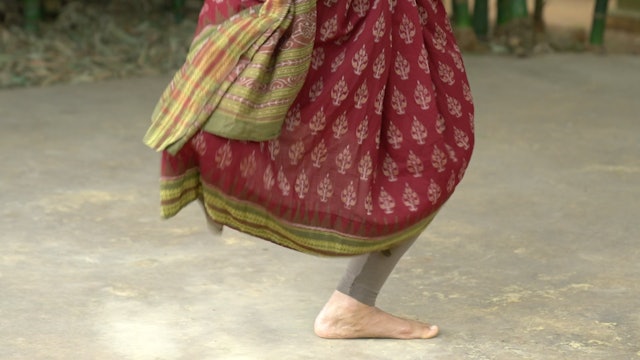 02:00Episode 1
02:00Episode 1Thattadavu 1
Episode 1
The Thattadavu introduces concepts of rhythm to the beginner student through various patters of striking the floor with the foot. Do these in sequence to progressively build clarity in the articulation of the foot with the floor. Keep your hips stable and try not to move from side to side. It is ...
-
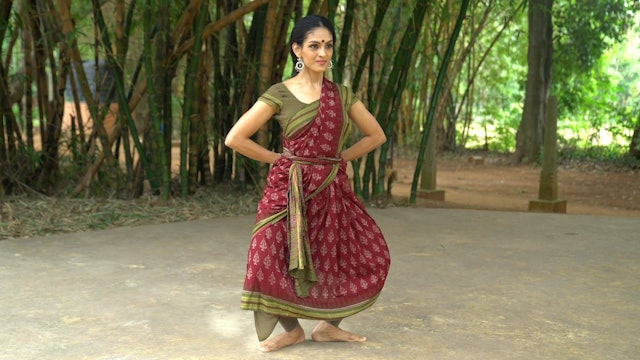 01:57Episode 2
01:57Episode 2Thattadavu 2
Episode 2
The Thattadavu introduces concepts of rhythm to the beginner student through various patters of striking the floor with the foot. Do these in sequence to progressively build clarity in the articulation of the foot with the floor. Keep your hips stable and try not to move from side to side. It is ...
-
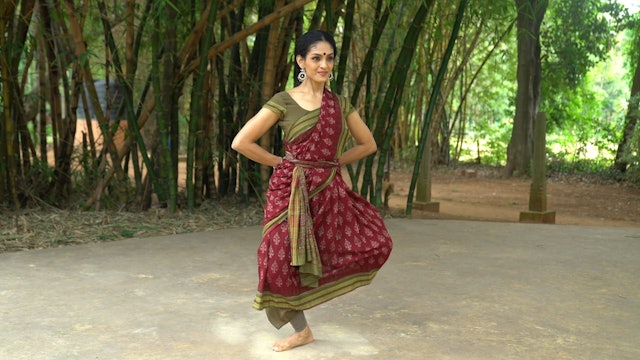 02:57Episode 3
02:57Episode 3Thattadavu 3
Episode 3
The Thattadavu introduces concepts of rhythm to the beginner student through various patters of striking the floor with the foot. Do these in sequence to progressively build clarity in the articulation of the foot with the floor. Keep your hips stable and try not to move from side to side. It is ...
-
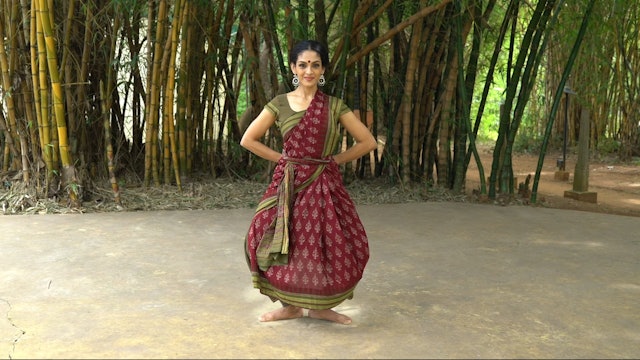 02:33Episode 4
02:33Episode 4Thattaduvu 4
Episode 4
The Thattadavu introduces concepts of rhythm to the beginner student through various patters of striking the floor with the foot. Do these in sequence to progressively build clarity in the articulation of the foot with the floor. Keep your hips stable and try not to move from side to side. It is ...
-
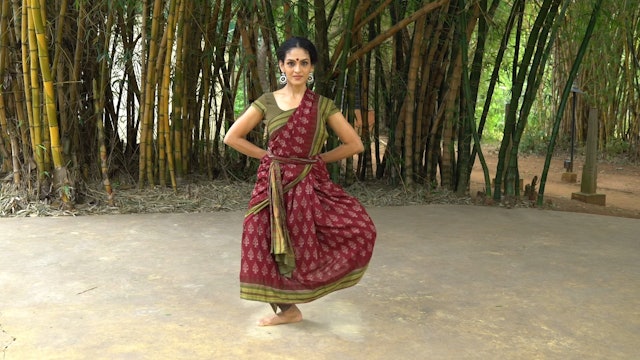 02:33Episode 5
02:33Episode 5Thattadavu 5
Episode 5
The Thattadavu introduces concepts of rhythm to the beginner student through various patters of striking the floor with the foot. Do these in sequence to progressively build clarity in the articulation of the foot with the floor. Keep your hips stable and try not to move from side to side. It is ...
-
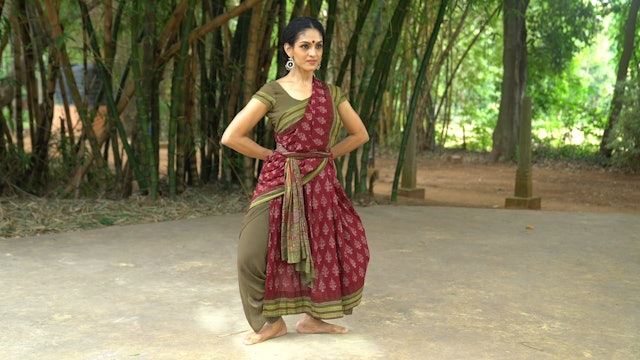 04:09Episode 6
04:09Episode 6Thattadavu 6
Episode 6
The Thattadavu introduces concepts of rhythm to the beginner student through various patters of striking the floor with the foot. Do these in sequence to progressively build clarity in the articulation of the foot with the floor. Keep your hips stable and try not to move from side to side. It is ...
-
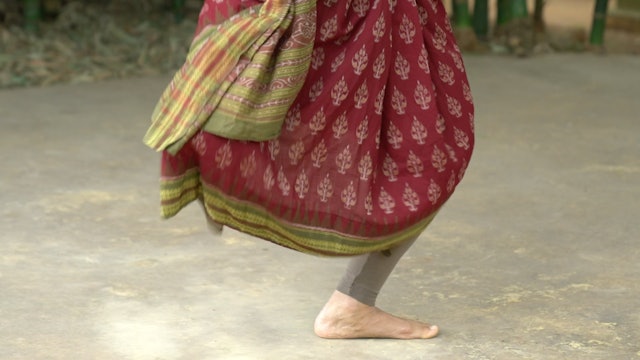 04:09Episode 7
04:09Episode 7Thattadavu 7
Episode 7
The Thattadavu introduces concepts of rhythm to the beginner student through various patters of striking the floor with the foot. Do these in sequence to progressively build clarity in the articulation of the foot with the floor. Keep your hips stable and try not to move from side to side. It is ...
-
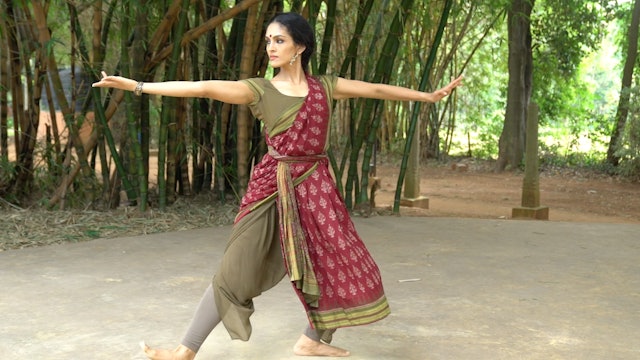 04:33Episode 8
04:33Episode 8Naatadavu 1
Episode 8
This Adavu has a stretching action in the leg where the foot is flexed and the heel is placed on the floor. The alignment of the hip bones is important in this. The turn-out and stability in the Araimandi position of the dancer must have developed by the time he/she starts the Naatadavu. If this ...
-
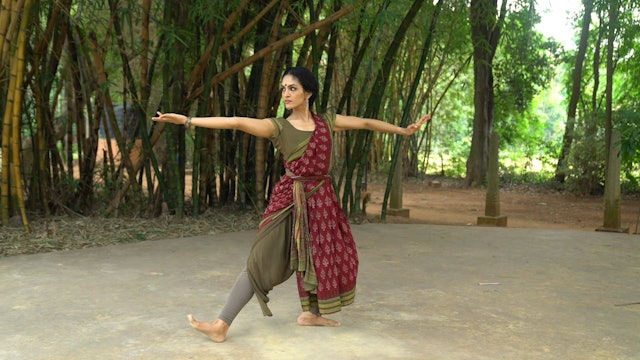 04:33Episode 9
04:33Episode 9Naatadavu 2
Episode 9
This Adavu has a stretching action in the leg where the foot is flexed and the heel is placed on the floor. The alignment of the hip bones is important in this. The turn-out and stability in the Araimandi position of the dancer must have developed by the time he/she starts the Naatadavu.
The se...
-
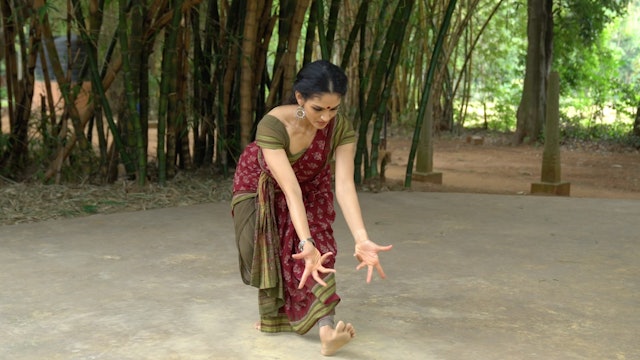 04:33Episode 10
04:33Episode 10Naatadavu 3
Episode 10
The third Naatadavu stretches the leg out to the front. If you are unable to keep your back straight when doing this, please refer to the flexibility section and practice the tips for forward bends and try again.
-
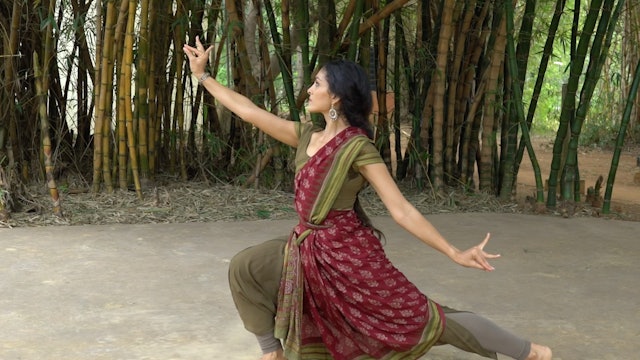 04:33Episode 11
04:33Episode 11Naatadavu 4
Episode 11
The 4th Naatadavu expects a little more stability in the body. Please practice any of the Strength sections that work on lunges and squats, to achieve a deep lunge in this Adavu.
-
Naatadavu 5
The 5th Naatadavu is fairly easier to execute if you are clear with the 3rd and 4th Naatadavu. The bend is in the diagonal, and the length of the back must be maintained. The Swastikam introduced in the second Naatadavu is used again. So as long as there has been clarity so far, this will be an e...
-
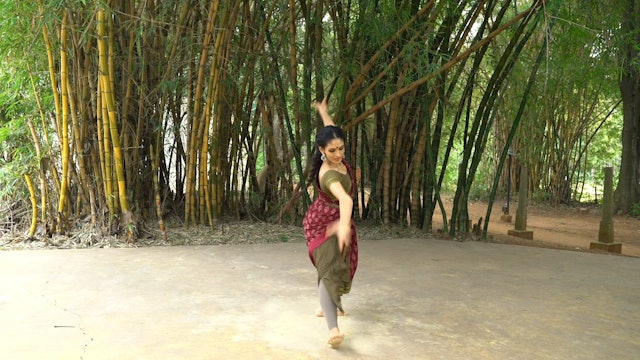 04:33Episode 13
04:33Episode 13Naatadavu 6
Episode 13
If you are unable to get up from the Muzhumandi position on the beat in the 3rd speed, please revisit the leg strength exercises in the exercise section. Pay special attention to the side squats. Also practice the hip- opener exercises that are present in the flexibility section.
-
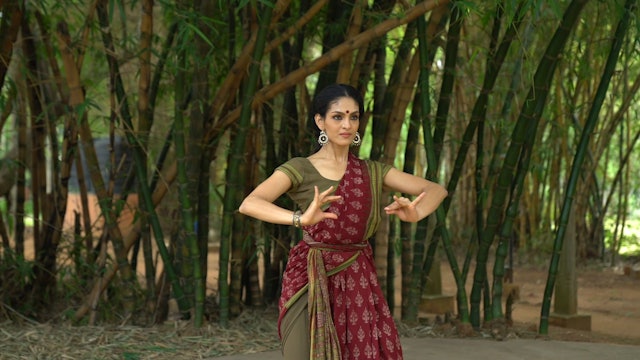 03:33Episode 14
03:33Episode 14Pakkadavu 1
Episode 14
Pointers for Pakkadavu 1:
Watch the level of your arms. Make sure you maintain the length of your neck. Turn to the side with your head straight, without tilting. Keep your eyeballs in the centre of your eyes. When you reach to the side, do not raise the opposite elbow. maintain length.
The ...
-
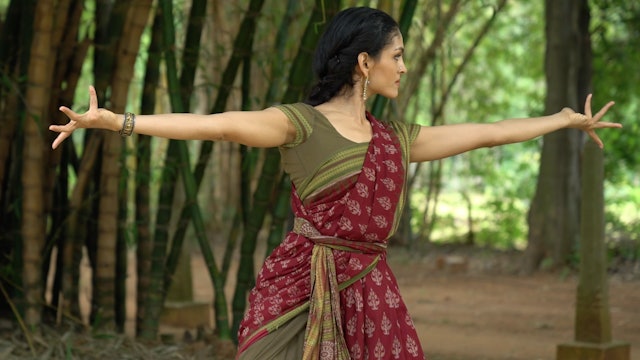 03:33Episode 15
03:33Episode 15Pakkadavu 2
Episode 15
Pointers for Pakkadavu 2:
Keep your shoulders down when stretching your arms.
Keep the height of the arm that you are looking away from. It is common to let this arm go too far back or let it drop below shoulder height.
Keep your head straight when you look to the side.
Make sure you keep you... -
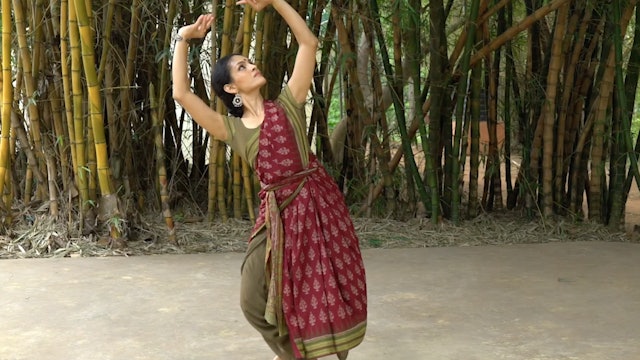 03:33Episode 16
03:33Episode 16Pakkadavu 3
Episode 16
Pointers for Pakkadavu 3:
Keep your shoulders down when lifting your arms.
Make sure your arms do not go too far back.
Follow your arm and keep your gaze toward the wrist of the arm you are bending away from.
Make sure you keep your thighs pushing back while retaining Swastikam in your feet.
... -
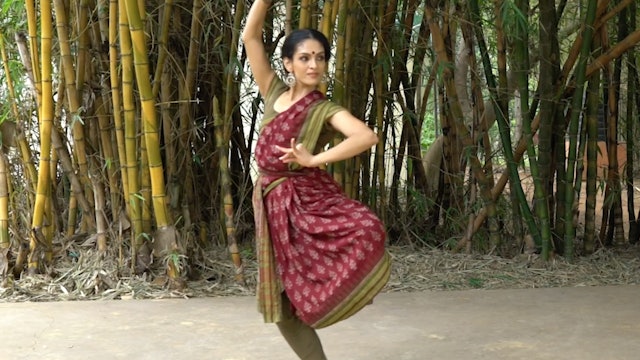 03:33Episode 17
03:33Episode 17Pakkadavu 4
Episode 17
Pointers for Pakkadavu 4:
- Keep your shoulders down when lifting your arm.
- Make sure your arm in front of your chest doesn't cross the centre of your chest.
- Make sure you do not sit in your hip when lifting one leg. Keep the thigh pushing back on the standing leg
- do not rest your raised ... -
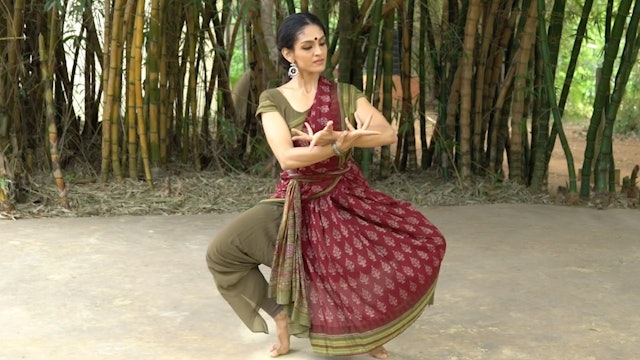 02:33Episode 18
02:33Episode 18Kuditta Mettaduvu
Episode 18
Pointers for Kuditta Mettadavu:
Try to go down instead of hopping up each time you snatch onto your heels.
Keep dropping your tailbone and pushing your thighs back.
When you bend to the side, try not to have any form of a forward bend.By the time you progress to the Kuditta mettadavu, your l...
-
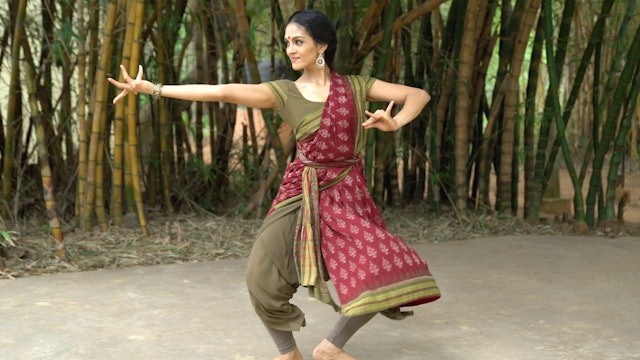 03:21Episode 19
03:21Episode 19Paraval Adavu 1
Episode 19
Paraval literally means to spread. Some schools of thought also call the Paraval adavu, the 'Pakkadavu' as it moves to the side while sliding. Some others change the name based on the way the foot articulates with the floor. A few of the types of Paraval, can be referred to as Marditam adavau, as...
-
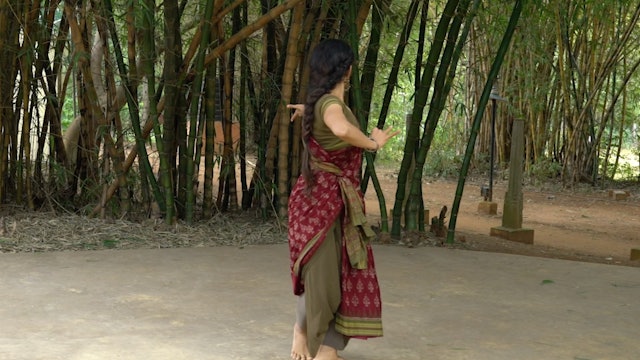 03:21Episode 20
03:21Episode 20Paraval Adavu 2
Episode 20
Paraval literally means to spread. Some schools of thought also call the Paraval adavu, the 'Pakkadavu' as it moves to the side while sliding. Some others change the name based on the way the foot articulates with the floor. A few of the types of Paraval, can be referred to as Marditam adavau, as...
-
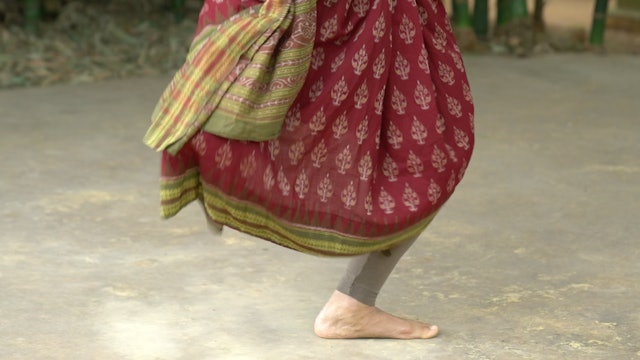 03:21Episode 21
03:21Episode 21Parval Adavu 3
Episode 21
Paraval literally means to spread. Some schools of thought also call the Paraval adavu, the 'Pakkadavu' as it moves to the side while sliding. Some others change the name based on the way the foot articulates with the floor. A few of the types of Paraval, can be referred to as Marditam adavau, as...
-
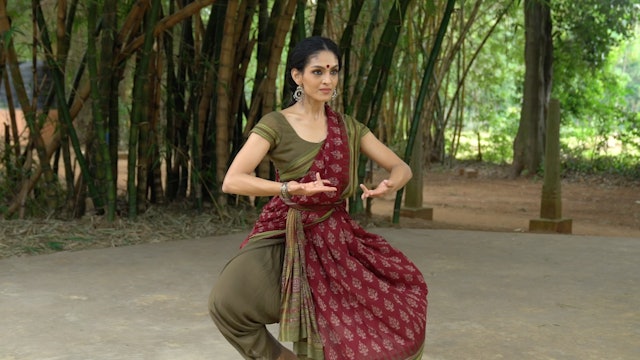 04:03Episode 22
04:03Episode 22Kudiita Thattaduvu
Episode 22
Pointers for Kuditta Thattadavu:
Try to go down instead of hopping up each time you snatch onto your heels.
Keep dropping your tailbone and pushing your thighs back.
When you bend to the side, elongate your lower side, so the length of your top side and bottom side remain the same.
Do not push... -
Jaar Adavu/ Sarikal Adavu 2
'Jaaru', literally means, to slide. This is also called the Sarikal Adavu. In the RK Method, we refer to the standing series that end in Samapada as the Jaar Adavu series and the other sliding Adavus that use Muzhumandi, and Aalidam as Sarikal adavus for simplicity.
This Adavu incorporates the ...
-
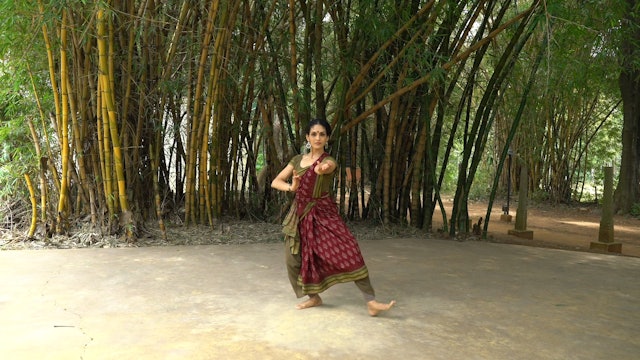 01:21Episode 24
01:21Episode 24Teermana Adavu 1
Episode 24
The Theermana or Makutadavu, is placed at the end of a Korwe or Jathi in specific rhythmic patterns, to create an ending.
The leg is either placed outstretched directly in front or at a diagonal of 45 degrees. The foot is flexed and the heel strikes the floor. In the Raadha Kalpa method we begi...
